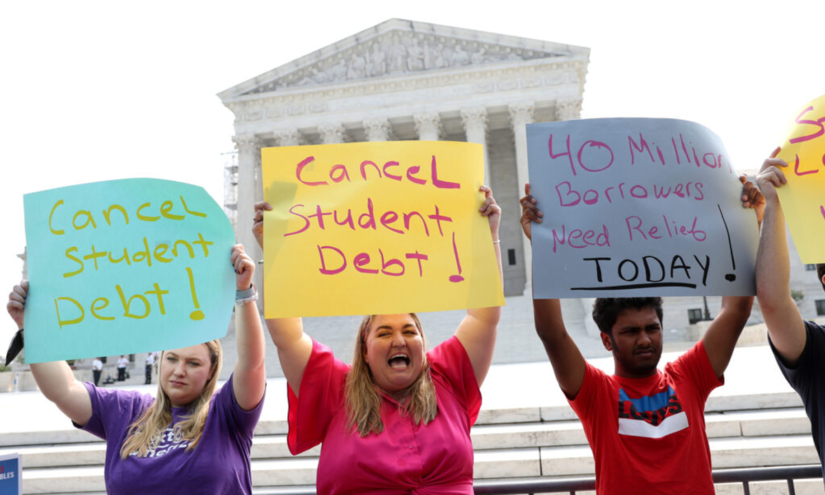During this summer, a team of students from MIT embarked on a journey to the sou …
Senate Effort to Block Biden’s Student Debt Relief Plan Based on Income Comes Up Short
Jennifer Livingstone

WASHINGTON — The attempt by U.S. Senate Republicans to block a new Biden administration rule on an income-driven repayment plan for federal student loans fell short on Wednesday night.
The resolution was not successful, with a vote of 49-50. Sen. Joe Manchin III of West Virginia was the only Democrat to support the resolution, while Sen. Tim Scott of South Carolina did not cast a vote.
Upon the failure of the resolution, Senate Majority Leader Chuck Schumer expressed his satisfaction.
“There are millions of students, poor, working class… who would have benefited from what the president has done,” Schumer said.
The top Republican on the U.S. Senate Health, Education, Labor and Pensions committee, Sen. Bill Cassidy of Louisiana, introduced the Congressional Review Act resolution.
There is no companion resolution in the House, where Republicans hold a slim majority. The White House has already stated its intention to veto the measure if it reaches the president’s desk.
“This legislation would result in higher payments for student loan borrowers and significantly increase costs for graduates,” the White House said in a statement. “It is heading in precisely the wrong direction.”
The Congressional Review Act, or CRA, enables Congress to overturn any regulatory rules issued by the White House. Unlike the usual 60 votes required to defeat a filibuster, a CRA only needs 51 votes to pass.
During his speech on the Senate floor, Cassidy argued that the new income-driven repayment plan does not “forgive debt.”
“It shifts the burden of $559 billion in federal student loans to the 87% of Americans who don’t have student loans, who chose not to go to college, or have already responsibly paid off their debts,” he said.
This is not the first instance of congressional Republicans attempting to block the Biden administration’s student debt relief policy.
In May, Republicans introduced and sent a Congressional Review Act resolution to the White House to prevent a one-time cancellation of up to $20,000 in federal student loan debt for qualifying borrowers. The White House vetoed this resolution, and a month later, the Supreme Court struck down the policy.
Prior to the vote on Wednesday, on the Senate floor, Schumer referred to the current Congressional Review Act as a “gut punch” to millions of borrowers, with the overwhelming majority being from the working class, poor, or middle class.
“Republicans have no qualms about granting massive tax breaks to ultra-wealthy billionaires and large corporations, but when it comes to assisting working families with student debt relief, suddenly it’s too costly, it will increase the deficit, and it’s unaffordable,” Schumer said. “Give me a break.”
The Department of Education unveiled the Saving on a Valuable Education, or SAVE, plan hours after the Supreme Court invalidated the Biden administration’s one-time student debt cancellation, which would have forgiven up to $10,000 in federal student loan debt for single adults making under $125,000 per year or under $250,000 for married couples.
Borrowers who received Pell Grants would have been eligible for an additional $10,000 in forgiveness of federal student loans.
The new income-driven repayment plan determines payments based on a borrower’s income and family size and forgives outstanding balances after a certain number of years. More than 5.5 million student loan borrowers have already enrolled in the SAVE plan, according to data released by the Department of Education.
On the Senate floor, Senate Minority Leader Mitch McConnell of Kentucky referred to the new IDR rule as a “socialist fever dream.”
“No matter how you look at it, the President’s policy is detrimental to working Americans who have made the sacrifices to pay off their student loans or avoid debt altogether,” he said. “However, with taxpayers footing the bill, it also acts as a powerful incentive for schools to further increase the cost of college.”
Repayments on federal student loans resumed last month following a nearly three-year hiatus due to the coronavirus pandemic.
Under the SAVE plan, borrowers with undergraduate loans will pay 5% of their discretionary income, as opposed to the previous income repayment plans that required 10%. Borrowers with undergraduate and graduate loans will pay a weighted average between 5% and 10% of their incomes.

